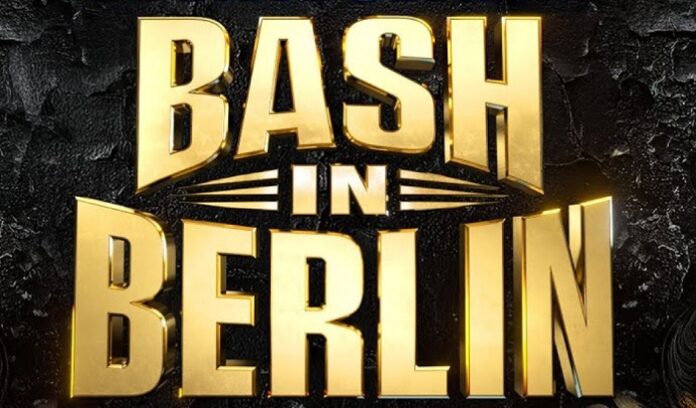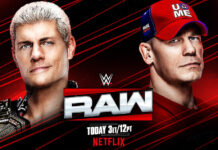
The WWE brought its premium live event series to Berlin, Germany and once again, the demand from the foreign markets paid off, as they had a packed arena and a truly electric atmosphere from the German audience. In some ways, I’m wondering if WWE brass could’ve run a bigger venue, based on the demand, but the nearly 20,000 fans at the Uber Arena allowed for the reactions to truly be heard rather than some of the response escaping in a stadium. It should be noted that while it isn’t discussed as often as other location, Germany actually is traditionally a very strong pro wrestling market. In the early-90s when the WWF struggled to draw outside of the northeast, Germany, as well as other markets from that region drew strong numbers for them. The German markets were also a stronghold for WCW, as well, particularly when the company essentially stopped touring in the early-90s outside of some of the tours of Europe. Furthermore, WCW leaned on the draw of live wrestling in Germany in the latter days of the organization when its attendance domestically plummeted in 2000.
As much as technology, particularly with the cesspool of social media, is the downfall of society, the advancements within the distribution of media are what not only allow for these overseas broadcasts, but also maximizes the potential revenue of the foreign markets. Keep in mind, there was a time when Europe received stacked house shows once a year or the occasional exclusive pay-per-view. In either case, there simply wasn’t going to be major shifts in the direction of the product on those events because the domestic audience wouldn’t be able to realistically watch it or follow the action. The office could’ve ran a tape on television, but the audience in the arena would have to watch it on the screens, which could flatten their live reaction afterwards. Specifically during the ratings war on the late-90s, management wasn’t going to risk running an acknowledged taped segment when the fans could change the channel to watch live wrestling from the other company.
Sure, it’s a little different watching a pay-per-view in the early afternoon, but the point is, streaming allows it to be a realistic option since the company doesn’t have the traditional split with cable companies or other PPV providers. While we haven’t seen one of the “big four” hosted overseas in the modern era, I don’t think it’s out of the question either, specifically Wrestlemania going to Wembley Stadium to draw 80,000 fans for two different shows. Right now, these foreign shows are somewhat scaled down in terms of the match card and the runtime of the broadcast, which actually makes for an easier viewing experience. The bottom line is, fans watching on Peacock and in the building know that titles can change hands and key points of a storyline can take place in the modern era.
At the same time, while the setting can be a place for titles to change hands, the circumstances of the title picture can dictate otherwise. The show opened with Cody Rhodes vs. Kevin Owens for the WWE championship. It was smart to start with this because it gives a solid beginning with the notion that Gunther will be the main event, preventing the crowd response from dwindling before the conclusion of the pay-per-view. That said, the key to building the drama of championship matches is selling the possibility that the title might be in jeopardy. Sometimes, reaching that point within the narrative of a contest just isn’t realistically possible, and unfortunately, Cody/Owens fell into that category. Everything they did was solid and at the level of a quality championship match, but after Rhodes’ two-year journey to the belt, the audience knows that he’s not going to lose it based on a month build for one of the European cards. Under different circumstances, perhaps with Owens as a heel with more of a build up, these two could have a great feud, but the match just wasn’t going to have a level of intensity when there was only a few weeks of momentum behind it. A side note,it should be mentioned that it looks like Owens might get typecast as the guy that is considered a solid utility worker that can make the star look good. Don’t get me wrong, the office knows the value that Owens brings to the table, which is why he will be offered a hefty sum to re-sign with the company and probably finish his career there, but it still seems like somewhat of a missed opportunity if he isn’t given a more meaningful run as a heel world champion at some point before he retires.
Speaking of which, with the odds of a title switch in the main event scene rather slim, it made sense for there to be a change of the Women’s Tag Team titles so that there was something of importance to impact the direction of the brand at the event. The match was fine for what it was, and depending on your perspective, there’s nothing wrong with that. Jade Cargill is still a project, and this segment was still designed to showcase her strengths without exposing any weaknesses, which is fine. There’s no reason to rush it, but it will be interesting to see how Jade continues to develop as a performer and if she can adapt to a individual role, potentially as a heel after the run in a tag team.
CM Punk vs. Drew McIntyre in a strap match was somewhat odd, because even though the feud has about six or seven months already behind it, there’s a lot of ground to be covered since Punk was injured for a majority of the year. I don’t know if a gimmick match for just the second match of the feud was needed, but maybe it was booked to add some sizzle to the Berlin card. However, the pieces of the puzzle were put into place with the attack on Punk during Raw this week, as it gives the angle a reason to continue. The strap match was solid and the physicality emphasized the hostility of the storyline. When Punk originally won, I thought it would’ve been anti-climatic if that was considered the conclusion of the angle because Punk would’ve gotten a measure of revenge, but as was seen on Raw, another layer was added to the storyline with Punk being put in an ambulance following the attack. The HIAC pay-per-view is next month, which is probably the next destination for the storyline, but if it’s done right, I really think Punk vs. Drew has enough steam to be a grudge match at WM next year.
The Damian Priest and Rhea Ripley vs. Dominik Mysterio and Liv Morgan segment was decent, but nothing too spectacular. In truth, it didn’t need to be some epic bout, it was a storyline-based segment that proved just how over Ripley is with the audience, which in the process helps put over the entire storyline. For a stable that was more or less dead in the water when it originally started with Edge a few years ago, it’s remarkable how valuable The Judgment Day faction has been with the ability to make new stars for the company. Ultimately, Priest was a transitional champion, but he became a more established star in the process. At the same time, Dominik and Liv have became more established heels throughout this angle so all things considered, it was mission accomplished. Ripley and Priest got the win, but this is another storyline that has the potential to be a featured WM match.
The main event more or less had the same hurdles as the opening match, the same way that the audience knows that Cody isn’t going to drop the belt after a month of build up, the fans in Berlin knew that Gunther wasn’t going to lose just a few weeks after he won the championship. Again, everything they did was solid and it was a quality main event, it just didn’t have the drama of a major title match because there just wasn’t the realistic possibility of a title switch. Gunther got the submission to retain the title, and the handshake afterwards was a nice endorsement from Orton because it helps solidify Gunther as a legitimate star.
What do you think? Share your thoughts, opinions, feedback, and anything else that was raised on Twitter @PWMania and Facebook.com/PWMania.
Until next week
-Jim LaMotta
E mail [email protected] | You can follow me on Instagram, Facebook, & Threads @jimlamotta89







